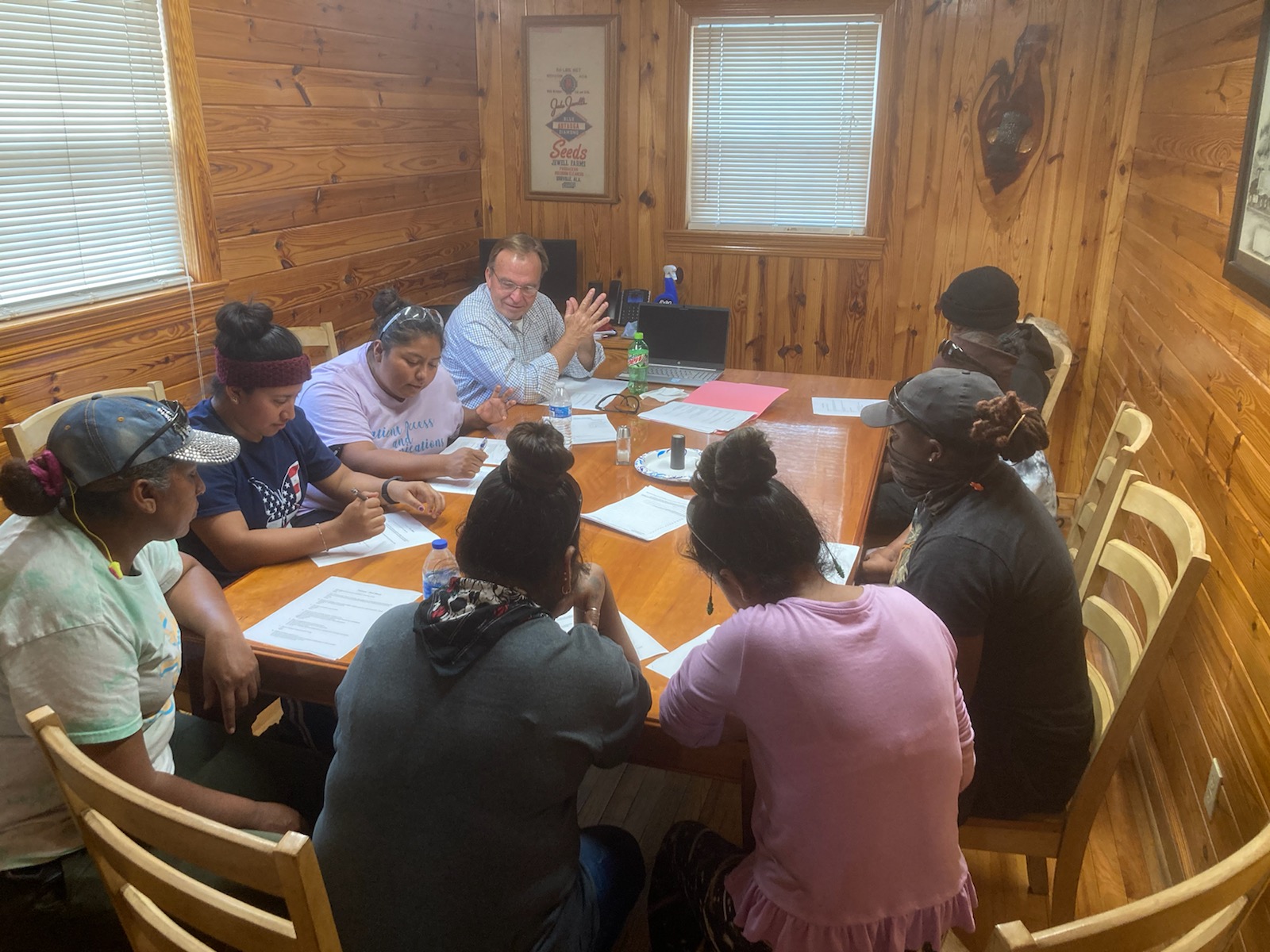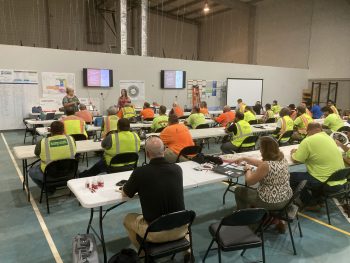Worker safety has always been a passion of Dr. Siyuan Song, but after she became aware of the Susan Harwood Training Grant Program within the Department of Labor’s Occupational Safety and Health Administration, her field of interest evolved. What started as providing training for construction workers turned into developing and delivering training for two more underserved groups: healthcare workers and surface miners.

Song, an assistant professor in civil, construction and environmental engineering, developed three training programs that have all been funded by the Department of Labor’s Occupational Safety and Health Administration as well as the Mine Safety and Health Administration. All of the trainings are available in English as well as Spanish and are offered on-site or virtually.
“The first training topic that I developed was heat stress because we are in the South where extreme heat poses a significant challenge. My team initiated a pilot heat stress training program and delivered it to several workers from construction and general industries before undertaking the developmental projects,” Song said.
For the past three years, Song has received the developmental grants she has applied for. In 2021, she was awarded more than $178,000 for “Workplace Safety and Health Training on Heat Stress for Workers and Employers” and $160,000 for “Occupational Heat Illness Prevention Training and Capacity Building” in 2022. Her current project is titled “Fortifying Workforce Safety: Strengthening Training Capacity for Heat Illness Prevention” and began in September 2023. She received almost $145,000 to support her most recent project.
“So far, we have trained over 1,200 workers in the past three years. Aside from the training efforts, my research team is also developing a real-time heat stress smart monitoring system to capture the early symptoms of certain injuries and give guidelines to managers on how they can better protect their workers,” Song said.

Before they started working to develop training for surface miners, Song and her research laboratory, Safety Automation and Visualization Environment, or SAVE, noticed that a large number of mining accidents, fatalities and severe injuries came from new and inexperienced surface miners. As stated in their promotional flyers for the training, new and inexperienced surface miners “account for approximately 26% of total accidents.”
In 2022, Song received nearly $160,000 from MSHA for the project “Improving Awareness of Workplace Hazards for New and Inexperienced Surface Mine Operators,” aimed at developing new training materials, along with almost $170,000 for the “Enhancing Workplace Safety through Hazard Awareness Training for New and Inexperienced Surface Miners” with the goal of providing training to 400 surface miners, which began in October 2023.

“Our mission is to develop new training materials for new and inexperienced surface miners. We use animations and videos and host expert panel discussions in our approach. We invite experienced mine safety professionals who have over 30 years of experience on-site to review our training materials and provide valuable suggestions,” Song said.
Song also received a little over $190,000 for her “Workplace Safety and Health Training on Infectious Diseases, including COVID-19” in 2021. After cases of monkeypox and different viruses began rising, Song and her research team decided to change their training topics to focus more on general infectious diseases.
“This training will help employers and employees to assess risk levels in workplace settings, identify suitable control measures and take necessary actions to safeguard workers and their families,” Song said. “The training covers essential topics such as infectious diseases in the workplace, understanding the causes, types, how they spread and practical steps to reduce exposure. It also addresses best practices for businesses, such as recordkeeping and adherence to existing OSHA standards, to classifying worker exposure to infectious diseases. The training can be customized to meet the specific needs of the trainees based on their industry type. We have trained over 400 workers so far.”
Every worker has the right to a safe and healthy workplace.
Dr. Siyuan Song
The heat stress training is available for safety professionals and managers along with workers through the Train the Trainer program. Its goal is to prepare hiring managers to deliver the training themselves. It also includes three levels of assessments to ensure those receiving the training are retaining the information.
“Level one assessment allows trainees to rate the training topic, training materials and the instructor after training. Level two assessment consists of a pre-test and post-test to measure the skills, knowledge and safety attitude acquired and retained by the trainee. The level three assessment is sent out 90 days after the training session to measure the skills, knowledge and safety attitude retained by the trainees after the training session,” Song said. “We can assess the effectiveness of our training delivery and make continuous improvements to enhance the overall training program.”
The training provides substantial information regarding worker safety, but the topic of workers’ rights and protections is also included. Song has a poster outside of her office encouraging workers to know their resources as well.
“We help each of our trainees understand workers’ rights and employers’ responsibilities under federal law,” Song said. “Every worker has the right to a safe and healthy workplace.”